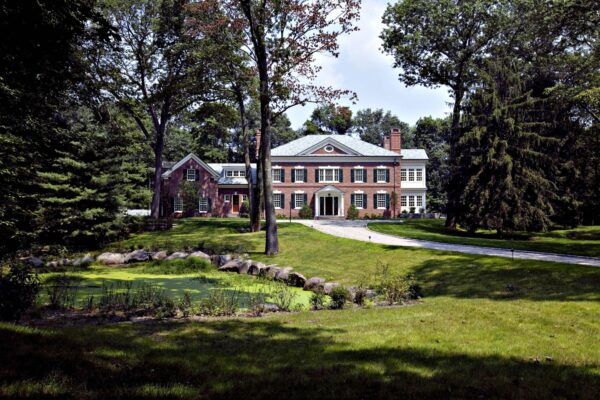By Prashant Gopal
Wealthy young urbanites are in a race to the U.S. suburbs. But they’re already late: The starter mansions are almost gone.
Take Wellesley, a leafy Massachusetts town of 30,000 people getting an influx of buyers from Boston who have outgrown apartments. Couples with dual incomes are coming out of the pandemic with more money, hungry for kids’ rooms and “his” and “her” home offices.

In the first week of February, there were just eight homes available for sale, a fifth of the level two years earlier. The cheapest one: $1.1 million.
“You have to act fast,” said Lara O’Rourke, a local Sotheby’s agent who helped a buyer beat out 15 others for a house listed for $1.4 million last month. “Inventory is not hanging around.”
Across the country, the upscale homes that were once a symbol of affluence and aspiration for well-to-do suburbanites are in short supply. Buyers are rushing to lock in purchases as mortgage rates rise, intensifying demand. That’s driving up prices from elite commuter towns such as Wellesley and Newton outside of Boston and Rye north of Manhattan, to booming Sun Belt areas like Austin, Texas.
In a heated U.S. housing market that has locked out many entry-level buyers, people with million-dollar budgets are better positioned than most. But their difficulty finding homes has a spillover effect: They push into surrounding towns, and cheaper segments, squeezing affordability more with each bid.
“The entry price for these towns has already gone sky high,” said Chris Herbert, managing director for Harvard University’s Joint Center for Housing Studies. “It ends up pushing prices up across the board.”
The number of U.S. cities where million-dollar homes are the norm jumped by the most ever last year, a Zillow Group Inc. report showed last week. Luxury listings — the top 5% of the market — are the tightest relative to demand since at least 2012, when brokerage Redfin Corp. started tracking the data. As of the fourth quarter it would take 1.9 months to sell all of the U.S. luxury single-homes for sale, compared with 3.3 months at the end of 2019.
Outside Boston, high-end inventory plunged almost 40% from a year earlier in the fourth quarter. That compares with a 14% drop in supply for the rest of the market.
Inventory in Greenwich, Connecticut, a suburb favored by Wall Street financiers, is at the lowest level in at least six years. Before the pandemic, the sprawling architecture and physical distance from neighbors, bars and restaurants seemed out of step with city-obsessed millennials. That’s changed.
Supply is tightening everywhere, even in back-country Greenwich, an area with stone mansions with tennis courts and swimming pools that have a special appeal in the Covid era, said Mark Pruner, an agent at Compass. Real estate also is seen as a good hedge against inflation, he said.
“Before larger houses on larger lots were a tough sale,” Pruner said. “Now, they’re what high-net-worth individuals are looking for, for the social distancing.”
With demand so hot, the supply shortage is building upon itself. Older people who might have considered downsizing are staying put instead, avoiding fighting it out with younger buyers for smaller homes. With mortgage rates rising, homeowners also are less likely to want to move and give up their lower-cost loan.
In Texas, sales of single-family homes of more than $1 million almost doubled last year, according to an analysis by the Texas Realtors trade group for the 12 months through October. More than a quarter of that activity was in Austin, where an influx of tech workers with Facebook, Google or Tesla Inc. salaries are hunting for space.
They’re beating out buyers like Jeremy Knight, who has lost four bidding wars. Knight, a local real estate agent who is looking to move to a different school district, says he’s seeking homes with asking prices below $1.8 million but expects to pay more. Houses at the lower end of luxury go well over asking, he said.
“I was looking at a home for $1.75 million,” Knight said. “Just to get a showing, I had to wiggle in a 15-minute time frame at the end of the day. It was booked from beginning to end.”
O’Rourke, the Sotheby’s agent in Wellesley, said five of six homes her sales team listed this year — including one priced at almost $6 million — sold within five days. Buyers who fail to crack into the market are considering lower-cost options like next-door Natick, a town with working-class roots, where listings top out at less than $2 million.
After one young couple from Boston lost several bids, O’Rourke advised them to consider South Natick. They ended up buying a $1.8 million house in January that’s about 5,500 square feet (511 square meters), far bigger than what they could have gotten in Wellesley.
“We’re seeing more compromises all around,” O’Rourke said.
In Wellesley, Taylor Ross is eager for more space. She and her husband are about to have their third child, two more than they had when they moved to the town in 2018. Working with agent Jennifer Madden, they’ve looked at about 10 houses since last summer. They doubled their original budget — now up to $4 million — and still, the homes leave them disappointed.
“How is this what you’re getting for $3 million?” Ross said. “They need work. Homes that expensive should be move-in ready.”
More stories like this are available on bloomberg.com.




